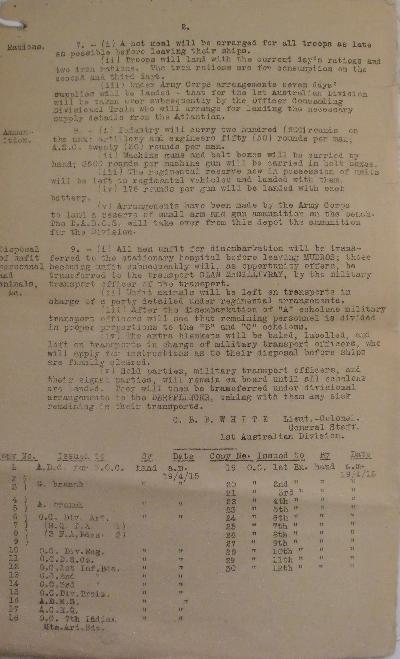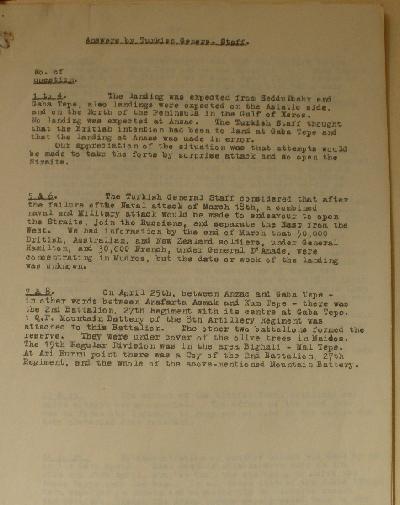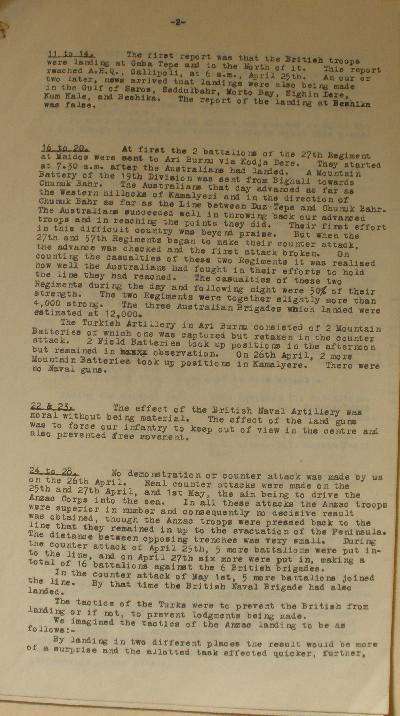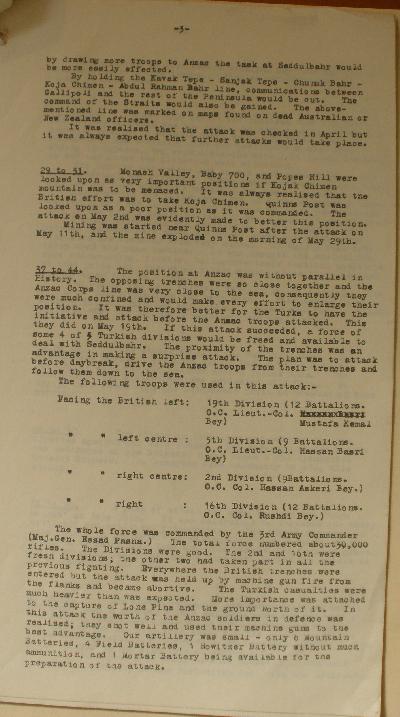Topic: BatzG - Gallipoli
Gallipoli Campaign - 1915
Bridges Disembarkation Orders, 18 April 1915, Part 1
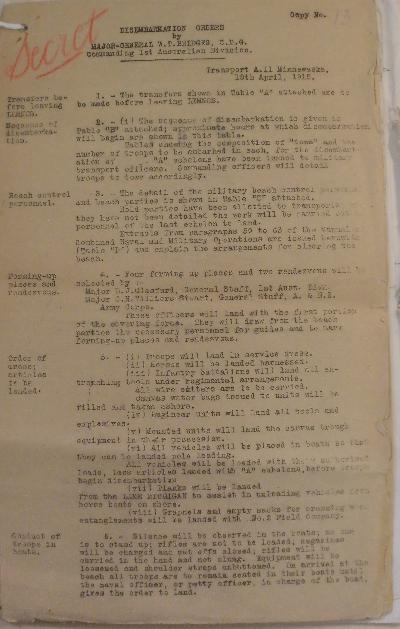
DISEMBARKATION ORDERS
By Major General W. T. BRIDGES, C.M.G., Commanding 1st Australian Division.
Transport A11 Minnewaska, 18th April, 1915.
Transfers before leaving Lemnos.
1. - The transfers shown in Table "A" attached are to be made before leaving LEMNOS.
Sequence of disembarkation.
2.(i) The sequence of disembarkation is given in Table "B" attached; approximate hours at which disembarkation will begin are shown in this table,
Tables showing the composition of "tows", and the number of troops to be embarked in each, for the disembarkation of "A" echelons have been issued to military transport officers. Commanding officers will detail troops to tows accordingly.
Beach control personnel.
3. - The detail of the military beach control personnel and beach parties is shown in Table "C" attached.
Hold Parties have been allotted to transports; when they have not been detailed the work will be carried out by personnel of the last echelon to land.
Extracts from Paragraphs 59 to 63 of the Manual of Combined Naval and Military Operations are issued herewith (Table "D") and explain the arrangements for clearing the beach.
Forming-up places and rendezvous.
4. - Four forming up places and two rendezvous will be selected by
Major DJ Glasfurd, General Staff, 1st Australian Division
Major CH Villiers-Stuart, General Staff, A & NZ Army Corps.
These officers will land with the first portion of the covering force. They will draw from the beach parties the necessary personnel for guides and to mark forming-up places and rendezvous.
Order of dress; articles to be landed.
5. –(i ) Troops will land in service dress.
(ii) Horses will be landed harnessed.
(iii) Infantry battalions will land all entrenching tools under regimental arrangements.
All wire cutters are to be carried.
Canvas water bags issued to units will be filled and taken ashore.(iv) Engineer units will land all tools and explosives.
(v) Mounted units will land the canvas trough equipment in their possession.
(vi) All vehicles will be placed in boats so that they can be landed pole leading.
All vehicles will be with their authorised loads, less articles landed with "A" echelons, before troops begin disembarkation.(vii) Planks will be landed from the LAKE MICHIGAN to assist in unloading vehicles from horse boats on shore.
(viii) Grapnels a empty sacks for crossing wire entanglements will be landed with No. 2 Field Company.
Conduct of troops in boats
6. -- Silence will be observed in the boats, no one is to stand up; rifles are not to be loaded; magazines will be charged and cut offs closed; rifles will be carried in the hand and not slung. Equipment will be loosened and shoulder straps unbuttoned. On arrival at the beach all troops are to remain seated in their boats until the naval officer, or petty officer, in charge of the boat, gives the order to land.
Previous: Gallipoli Campaign
Next: Gallipoli Campaign - 1915, Bridges Disembarkation Orders, 18 April 1915, Part 2
Further Reading:
Citation: Gallipoli Campaign - 1915, Bridges Disembarkation Orders, 18 April 1915, Part 1




